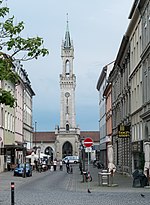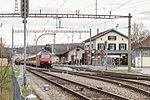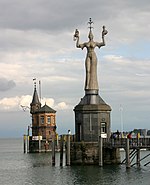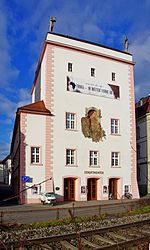Bodensee Arena
21st-century architecture in SwitzerlandEuropean ice hockey venue stubsIndoor arenas in SwitzerlandIndoor ice hockey venues in SwitzerlandKreuzlingen ... and 2 more
Sports venues completed in 2000Swiss sports venue stubs
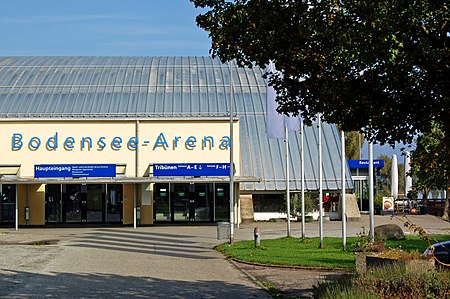
Bodensee Arena is an arena in Kreuzlingen, Switzerland. It is primarily used for ice hockey and is the home arena of HC Thurgau and EHC Kreuzlingen-Konstanz. Bodensee Arena opened in 2000 and holds 4,000 people.
Excerpt from the Wikipedia article Bodensee Arena (License: CC BY-SA 3.0, Authors, Images).Bodensee Arena
Seestrasse,
Geographical coordinates (GPS) Address External links Nearby Places Show on map
Geographical coordinates (GPS)
| Latitude | Longitude |
|---|---|
| N 47.6547 ° | E 9.18 ° |
Address
Bodensee Arena
Seestrasse 11b
8280
Thurgau, Switzerland
Open on Google Maps
